 "Jesse Shaffer" (7esse)
"Jesse Shaffer" (7esse)
10/01/2014 at 11:53 ē Filed to: None
 15
15
 46
46
 "Jesse Shaffer" (7esse)
"Jesse Shaffer" (7esse)
10/01/2014 at 11:53 ē Filed to: None |  15 15
|  46 46 |
So, you want a lot of power and you donít have many monies: Dodge Neon.
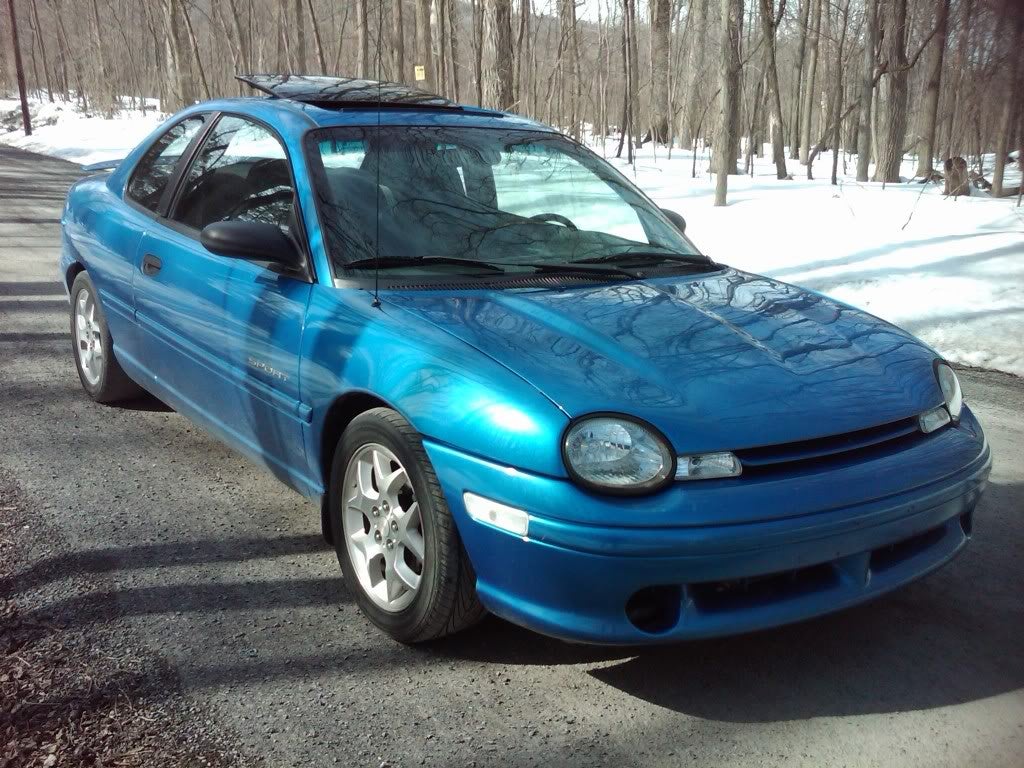
... alright dude, stop laughing. No, seriously... let me finish... er.......
Just get in.
The first-generation neon has one of the most wrongfully conceived wraps in the econo-box world. Neon is one of those cars that everybody loves to hate. In its youth, neon didnít roam through high school in a detached emotional silence. Neon was too curious for that. Neon was the oddball dork that tried-out for the football team and obviously hadnít practiced much of anything involving hand-eye coordination beyond developing muscle-memory for a joystick. It failed miserably in its first impression and now carries the reputation of ďthat squeaky dude who surprisingly showed up for try-outs, but only said one word the entire time:Ē
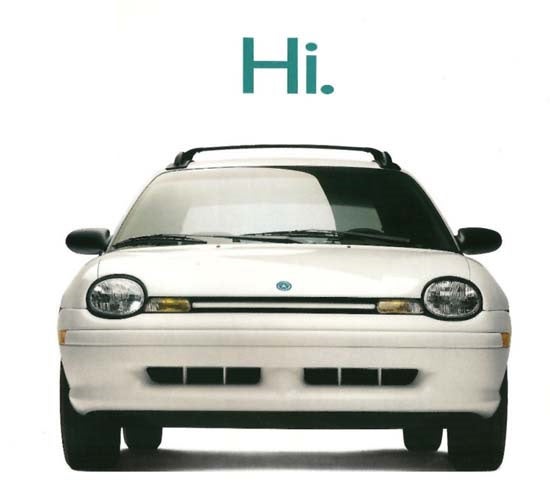
Neon seemed sort-of intelligent on the field, but obviously wasnít making the team. Still, there was something that compelled it to show up in the first place that nobody really ever forgot about... It didnít seem to fit in with the flat-paced emo kids, either. Neon had something that they didnít: Torque.
When neon goes up a hill it doesnít shift, moan, or wail: It just asks for more pedal with a guttural growl. Thereís a transcending difference, here. When neon discovered this difference from its import buddies, neon got curious about what else it could accomplish. When neonís Asian friends encountered a roadway leading up a scary mountain, they could be convinced to get to the top of it, but; they were going to bitch and whine about it the whole way... neon doesnít do that: Itís inefficient. Although neon was told it is supposed to break down at 60k miles, it doesnít always do that, either.
Allpar Car of the month: 400k mile Dodge Neon
When Chrysler launched the neon back in 1994, they had big hopes and high expectations for their newest introductory model. They literally must have been high when they were sorting out their expectations. The first problem that customers noticed was with the windows. Frame-less windows may look cool, but when you do it wrong they make noise at highway speeds. The windows would buffet back and forth in certain conditions and allow thin wisps of outside air in to the cabin, that created noise, which bothered some owners. The next problem was a little tougher to ignore: The fucking head gasket.
Maybe it was part of a larger situation that led Chrysler to experience an attempted hostile takeover in 1995 - I donít really know - but why, where, and when was the decision made to make the most important gasket in the car out of fucking paper? PAPER!
After enough situations occurred in which executives had to talk to ďnormalĒ people, they finally decided that this was too-frequently bothersome and revised the gasket to a multi-layered steel unit by mid Ď97. But by then, the damage was already done.
So, a lot of Neons with the paper gasket really did die at 60k miles. Some owners who ignored replacing the timing belt also lost their cars between 80-140k miles. Owners of automatic transmission models are lucky to see 140k miles.
The engine is an ďinterferenceĒ design. No, this isnít football, or soccer, or whatever. This means that, if the timing belt snaps, the pistons and valves can potentially act on all of that graceful flirting and finally decide to just completely fuck each other. In most cases the valves take the brunt of the damage - so a lot of neons did get their valves smashed-in. My car was one of them... So, why am I telling you that a poorly designed car is where itís at? Because you can !!!error: Indecipherable SUB-paragraph formatting!!! from the mistakes of others, bro.
!!! UNKNOWN CONTENT TYPE !!!
This is the Kevin Bacon of 90's Chrysler engines. You can go to a junkyard and get a used cylinder head with a fresh set of valves from:
a Dodge Caravan, Dodge Stratus, Chrysler Town and Country, Plymouth Breeze, Plymouth Voyager, Chrysler Cirrus, Eagle Talon, Mitsubishi Eclipse, Plymouth Neon, Chrysler Neon, Chrysler PT Cruiser, Chrysler Sebring, Jeep Liberty, Jeep Wrangler, or first-generation Dodge Avenger.
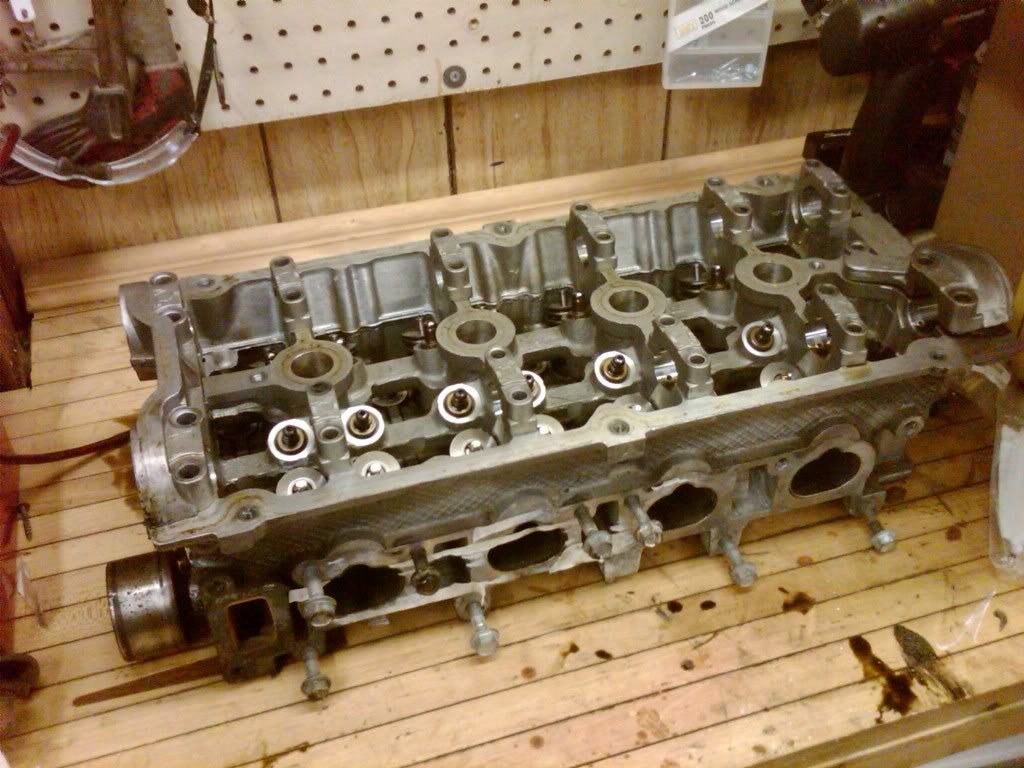
The blocks may vary between 2.0 and 2.4 liters, but the cylinder heads are the exact same casting, with the exception of your choice of front or rearward facing exhaust/intake ports, depending on the model... What more do you want?
The Iron blocks underneath the head are vastly similar, but I will say that I prefer the 2.4L for
A. More displacement (ĎMurica)
B. Equal-length head bolts
C. The penultimate sentence of this article.
The 2.0 bottom-end has shorter head bolts at the left and right perimeter. You could do this build on any one of the aforementioned platforms. In my case - I went with the lightest one because: racecar (technically the four-door first-gen neons are lighter than the two door cars, but shut up.) This platform also holds my highest requirement: Itís cheap. The chassis is readily available, and can usually be had for next to nothing, pretty much anywhere in the continental United States. Itís also fairly stiff.
If it wasnít as stiff as it is - itíd be useless. I have to THROW the car in to corners as deeply as possible, vectoring it towards the apex of a given bend using relative gravitational pitch and yaw on some kind of bell-curve that I canít explain to gradually slam down as much mechanical grip as lately as possible in order to plant the car to my desired line just to even get close. When Iím hustling the car and I allow the manifold to breach vacuum with the steering wheel cocked more than 15 degrees - it just tries to jump off of the road. You have to carry as much momentum as you can get, because thatís all you have with front-wheel drive in a corner. As wild as it is, itís predictable because the chassis doesnít really flex that much.
If you were so inclined you could take a few shortcuts and spend much more bucks for the very slightly updated head from a neon SRT-4, GT Cruiser, or Mexico-only model Cirrus LXi and Dodge Stratus R/T - as these cars are already forcibly inducting from the factory.
Everything that Regular Car Reviews says about the srt-4 in the first four minutes is on-point, but then you get to 4:38 in the video. The power-train is, if nothing else, really funny. My car is a bit more funny, because itís lacking some of the pretense as well as a few hundred pounds of the weight.
( Full-Disclosure: thatís 2560 with the driver [150] and a full tank of gas [69] on the pad)
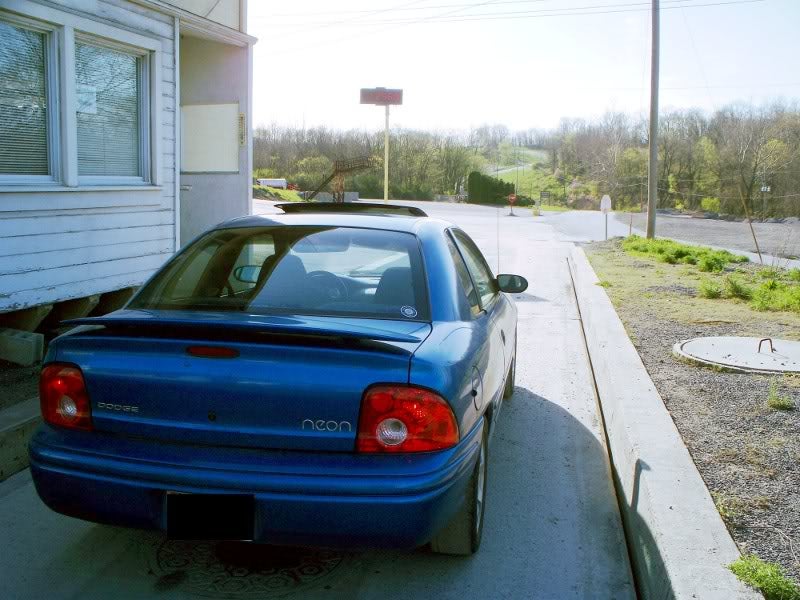
When my car shows up - everyone automatically assumes that itís a piece of shit. Itís a loud and ugly car with aftermarket tail lights from the 90's. But itís more than that. Itís a turbocharged loud and ugly car with aftermarket tail lights from the 90's.
This thing makes 340 ft lbs of torque !!!error: Indecipherable SUB-paragraph formatting!!! at wide open throttle by 2,650rpm. The Mitsubishi TD04 turbocharger might not build massive boost at high rpm, but it spools like a beast. My car also gets 25mpg on the highway, is incredibly easy to learn how to drive a ďstickĒ in (you can forget your foot is even on the clutch, and the car just lurches forward while hissing and burping at you,) and drives like a stock neon below 1/3 throttle. After that point - the atmospheric pressure inside of the engine equalizes from vacuum and begins to pressurize, as the turbocharger does what it does best - tighten your sphincter.
!!! UNKNOWN CONTENT TYPE !!!
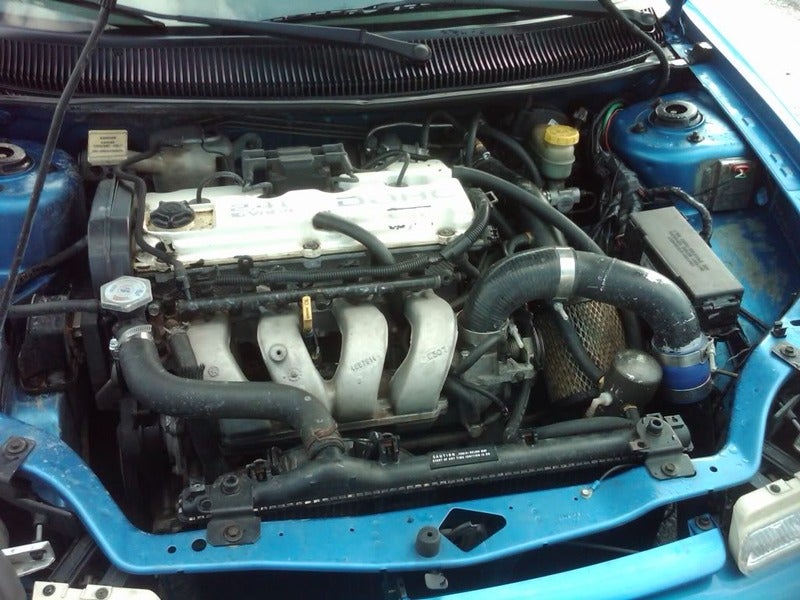
The engine is a mutt, one of those Frankenstein products that takes a little puzzle-solving and forward thinking to unlock. We all know that Dodge turbocharged a 2.4 Liter four-banger when the 2003 SRT-4 was introduced. Dodge and Mitsubishi came up with this odd ďturbofoldĒ that joined the turbo housing to the exhaust manifold and added a built-in waste-gate to the underside that was actuated by a rod on the top.
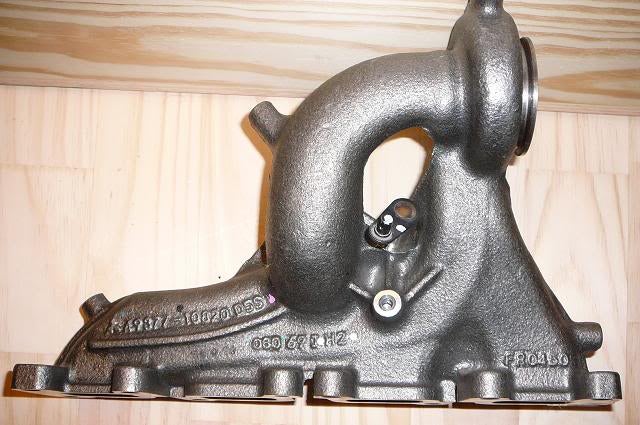
This will bolt directly to any of the aforementioned engines in this article. I bought mine, complete with the turbocharger, as a ready-to-run unit for $150. When I bought it, it was no miraculous negotiation, thatís just what they went for. Maybe $250 if they were barely used.
Now, you could stop there. You could leave the factory internals in your 2.0L neon and run 5-7 psi ďsafely.Ē You need a fuel solution, some air plumbing, and to decide on how to mount your exhaust system to the turbofold... but what if you wanted to do more. What if you wanted to address that ďinterferenceĒ problem that we talked about. You can, no shit, buy Mopar OEM 2.4 liter low compression first generation SRT-4 pistons already pressed on to forged rods, rated for use at around 500 horsepower, for $350... and they drop right in to the engine from a minivan.
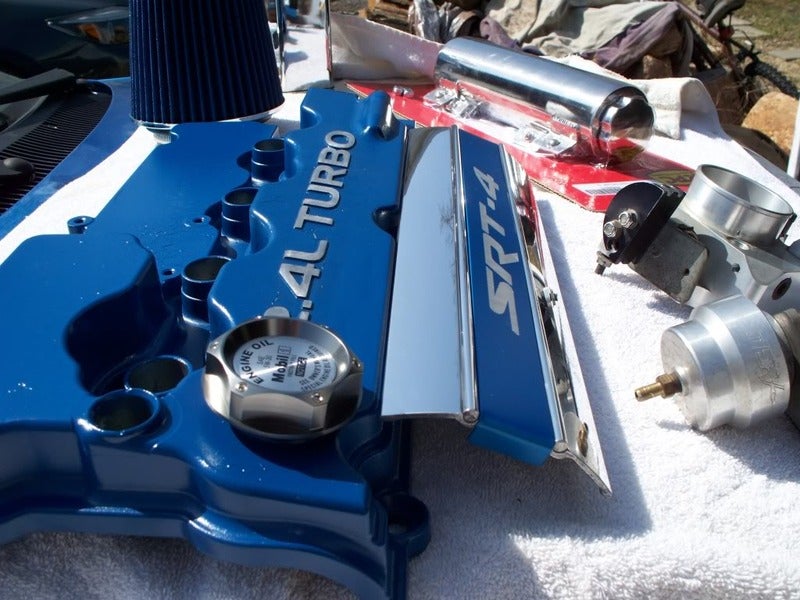
+Follow me, as neon finds its niche: running track: !!!error: Indecipherable SUB-paragraph formatting!!!
 Brian Silvestro
> Jesse Shaffer
Brian Silvestro
> Jesse Shaffer
09/30/2014 at 13:55 |
|
These cars have an amazing chassis. People AutoX them and they annihilate the competition.
 RazoE
> Jesse Shaffer
RazoE
> Jesse Shaffer
09/30/2014 at 13:59 |
|
I always had a soft-spot for the Neon. It was ugly as sin until the end, but man did it have potential.
 Jesse Shaffer
> Brian Silvestro
Jesse Shaffer
> Brian Silvestro
09/30/2014 at 14:00 |
|
If it wasn't as stiff as it is - it'd be useless. I literally have to THROW the car in to corners and just whip the wheel and plant it to get through at any decent speed. If I touch the gas while the steering wheel is turned - it just tries to jump off of the road.
 505Turbeaux
> Jesse Shaffer
505Turbeaux
> Jesse Shaffer
09/30/2014 at 14:00 |
|
I ran an r/t in autocross for a while. such a beast for that. Loved it
 ACESandEIGHTS
> Jesse Shaffer
ACESandEIGHTS
> Jesse Shaffer
09/30/2014 at 14:02 |
|
I rolled one of these for a few years. They got a bad rap and I never understood why. I know damned well that in the 90s they were #2 to the Civic for a good long while in aftermarket parts available. Consider that: in the US, people were tuning these far more than they were VW, Ford, Subaru, Mazda, whoever.
 Brian Silvestro
> Jesse Shaffer
Brian Silvestro
> Jesse Shaffer
09/30/2014 at 14:06 |
|
Hehe, that sounds fun.
I bet with slicks it'd be a monster.
 SidewaysOnDirt still misses Bowie
> Jesse Shaffer
SidewaysOnDirt still misses Bowie
> Jesse Shaffer
09/30/2014 at 15:00 |
|
Someone once told me that I must hate cars because the original Neon is one of the only Chrysler products that I like. I'm glad to see that I'm not the only one who realizes how good it is.
 SidewaysOnDirt still misses Bowie
> Brian Silvestro
SidewaysOnDirt still misses Bowie
> Brian Silvestro
09/30/2014 at 15:00 |
|
They have a ton of success in rally too.
 SidewaysOnDirt still misses Bowie
> Jesse Shaffer
SidewaysOnDirt still misses Bowie
> Jesse Shaffer
09/30/2014 at 15:05 |
|
This should totally be reposted to the front page.
 Jesse Shaffer
> SidewaysOnDirt still misses Bowie
Jesse Shaffer
> SidewaysOnDirt still misses Bowie
09/30/2014 at 15:06 |
|
THANK YOU! email tips@jalopnik.com for me!
 Takuro Spirit
> Jesse Shaffer
Takuro Spirit
> Jesse Shaffer
09/30/2014 at 15:37 |
|
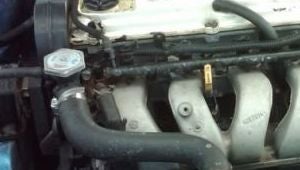
I know a guy that used to custom build the mount adapters to drop a 2.4L into a Neon. He had a lot of Neons.
 Jesse Shaffer
> Takuro Spirit
Jesse Shaffer
> Takuro Spirit
09/30/2014 at 15:42 |
|
I lost count at 16...
 Takuro Spirit
> Jesse Shaffer
Takuro Spirit
> Jesse Shaffer
09/30/2014 at 15:51 |
|
One might say he had.... TooManyNeons.
 Jesse Shaffer
> Takuro Spirit
Jesse Shaffer
> Takuro Spirit
09/30/2014 at 15:55 |
|
without those forums - my car wouldn't exist.
 Takuro Spirit
> Jesse Shaffer
Takuro Spirit
> Jesse Shaffer
09/30/2014 at 15:59 |
|
Yeah neons.org was the shit back in the day. I stopped at owning two because I had babies, but they are fun little cars and I would not say no to a clean example if one was thrown my way some day.
 blackchair
> Jesse Shaffer
blackchair
> Jesse Shaffer
09/30/2014 at 16:13 |
|
This was my first car. I agree that it is a great car. It was fun.
 Jesse Shaffer
> Brian Silvestro
Jesse Shaffer
> Brian Silvestro
09/30/2014 at 16:37 |
|
I bet it would too... but it's not "combatcar" status yet - as in I can't use all of the pedal if I race it. It's about $2,500 away from me being able to launch it for the first time. I've literally never done it - because I know it's just going to snap an axle. I don't even have an LSD in it, yet - but I don't know if I really need it - there's so much torque that both wheels are always spinning anyway. I guess on the strip I would.... yeah.
I've even got launch control... and I can't fucking afford to use it. I'm trying though, haha.
 Brian Silvestro
> Jesse Shaffer
Brian Silvestro
> Jesse Shaffer
09/30/2014 at 16:47 |
|
DO IT
 Frank Grimes
> Jesse Shaffer
Frank Grimes
> Jesse Shaffer
09/30/2014 at 16:56 |
|
My brother has a spirit r/t that ruined its ability to keep coolant in the head. Stupid steel plugs in a aluminum head.
That thing was super quick.
I would like to build a neon one day I always like the look of them expecially the front end for some reason.
 Frank Grimes
> Jesse Shaffer
Frank Grimes
> Jesse Shaffer
09/30/2014 at 17:12 |
|
This belongs here.
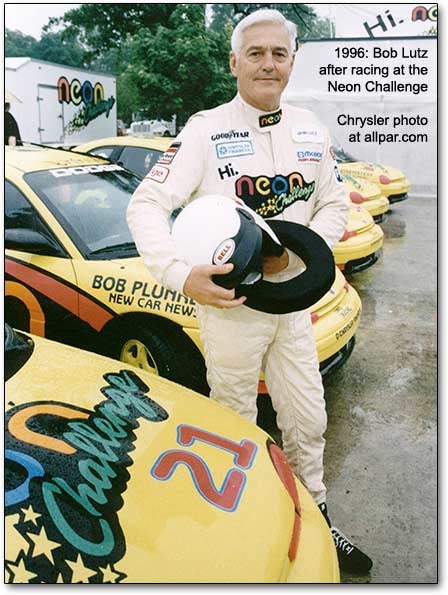
 Jesse Shaffer
> Frank Grimes
Jesse Shaffer
> Frank Grimes
09/30/2014 at 17:16 |
|
We need to find a pic of Tiff Needell from this event!
 Fresh-Outta-Nissans
> Jesse Shaffer
Fresh-Outta-Nissans
> Jesse Shaffer
10/07/2014 at 00:43 |
|
You know what, between the Neon and the Mk1 Saturn... Maybe American cars have never been bad. I very fondly remember my brother's SL1 Saturn for its chassis rigidity and lightness. Less power than your car, given. Tell us more!
 If only EssExTee could be so grossly incandescent
> Jesse Shaffer
If only EssExTee could be so grossly incandescent
> Jesse Shaffer
10/19/2014 at 22:20 |
|
You stole my wheels.
 Joshua "Dr. Science" Gilbert
> Jesse Shaffer
Joshua "Dr. Science" Gilbert
> Jesse Shaffer
11/09/2014 at 22:41 |
|
This will bolt directly to any of the aforementioned engines in this article. I bought mine, complete with the turbocharger, as a ready-to-run unit for $150. When I bought it, it was no miraculous negotiation, that's just what they went for. Maybe $250 if they were barely used......
Now, you could stop there. You could leave the factory internals in your 2.0L neon and run 5-7 psi "safely." You need a fuel solution, some air plumbing, and to decide on how to mount your exhaust system to the turbofold... but what if you wanted to do more. What if you wanted to address that "interference" problem that we talked about. You can, no shit, buy Mopar OEM 2.4L liter low compression first generation SRT-4 pistons already pressed on to forged rods, rated for use at around 500 horsepower, for $350... and they drop right in to the engine from a minivan.
WAIT. WHAT. WHY NOT INTO A crapbox 01-07 Caravan..... SLEEPAH.
 Jesse Shaffer
> Joshua "Dr. Science" Gilbert
Jesse Shaffer
> Joshua "Dr. Science" Gilbert
11/09/2014 at 22:46 |
|
It's been done, and it's hilarious:
But, for me, like I said: racecar
 Joshua "Dr. Science" Gilbert
> Jesse Shaffer
Joshua "Dr. Science" Gilbert
> Jesse Shaffer
11/10/2014 at 00:12 |
|
But has anyone SRT'd an old Wrangler?
 Jesse Shaffer
> Joshua "Dr. Science" Gilbert
Jesse Shaffer
> Joshua "Dr. Science" Gilbert
11/10/2014 at 00:15 |
|
SRT'd should be a tumbler (I barely know what a tumbler is.)
 Joshua "Dr. Science" Gilbert
> Jesse Shaffer
Joshua "Dr. Science" Gilbert
> Jesse Shaffer
11/10/2014 at 00:22 |
|
what the heck hahaha
 Hahayoustupidludditeshutupandgohandcrankyourmodeltalready
> Brian Silvestro
Hahayoustupidludditeshutupandgohandcrankyourmodeltalready
> Brian Silvestro
11/10/2014 at 06:36 |
|
Brian! Stop changing your avatar, I'd just gotten used to the old one! :)
 Hahayoustupidludditeshutupandgohandcrankyourmodeltalready
> Fresh-Outta-Nissans
Hahayoustupidludditeshutupandgohandcrankyourmodeltalready
> Fresh-Outta-Nissans
11/10/2014 at 06:39 |
|
I don't think "American cars have never been bad", the 1980 Chevy Citation would beg to differ. The Neon and Original Saturns were completely different from any other American car of the time.
 Hahayoustupidludditeshutupandgohandcrankyourmodeltalready
> Jesse Shaffer
Hahayoustupidludditeshutupandgohandcrankyourmodeltalready
> Jesse Shaffer
11/10/2014 at 06:41 |
|
Great article. The first 1/3rd and several other parts throughout it sound exactly like RCR.
 Brian Silvestro
> Hahayoustupidludditeshutupandgohandcrankyourmodeltalready
Brian Silvestro
> Hahayoustupidludditeshutupandgohandcrankyourmodeltalready
11/10/2014 at 07:52 |
|
DEAL WITH IT
 Jesse Shaffer
> Hahayoustupidludditeshutupandgohandcrankyourmodeltalready
Jesse Shaffer
> Hahayoustupidludditeshutupandgohandcrankyourmodeltalready
11/10/2014 at 10:18 |
|
I totally ripped that guy off. I'm trying to come up with my OWN writing style, but I feel like everything has already been done... it's weird. We're both from Pennsylvania, maybe there's something in the water.
 Hahayoustupidludditeshutupandgohandcrankyourmodeltalready
> Brian Silvestro
Hahayoustupidludditeshutupandgohandcrankyourmodeltalready
> Brian Silvestro
11/10/2014 at 11:18 |
|
SHOUT SHOUT SHOUT
 Hahayoustupidludditeshutupandgohandcrankyourmodeltalready
> Jesse Shaffer
Hahayoustupidludditeshutupandgohandcrankyourmodeltalready
> Jesse Shaffer
11/10/2014 at 11:20 |
|
We'll see if Doug's writing style changes soon, as he's there now.
 Brian Silvestro
> Hahayoustupidludditeshutupandgohandcrankyourmodeltalready
Brian Silvestro
> Hahayoustupidludditeshutupandgohandcrankyourmodeltalready
11/10/2014 at 11:36 |
|
INTERNET WORDS
 Hahayoustupidludditeshutupandgohandcrankyourmodeltalready
> Brian Silvestro
Hahayoustupidludditeshutupandgohandcrankyourmodeltalready
> Brian Silvestro
11/10/2014 at 11:39 |
|
RABBLE RABBLE
 aquila121
> Jesse Shaffer
aquila121
> Jesse Shaffer
11/11/2014 at 01:38 |
|
Does it worry anyone else that the dash video at the beginning shows about 20 psi of oil pressure the whole time as he's on WOT doing over 100 mph? I thought oil pressure was one of those things that usually increased to the 50-70 range under load... but maybe my Accusump causes that (and this isn't abnormalóI don't know for certain).
 Jesse Shaffer
> aquila121
Jesse Shaffer
> aquila121
11/11/2014 at 01:45 |
|
This gauge was hooked up to the factory CPU, not the stand-alone personally mapped ECU, but Kudos for being the first person to point this out. This gauge had nothing on GM oil pressure gauges from the 90's
 jrhmobile
> Jesse Shaffer
jrhmobile
> Jesse Shaffer
11/11/2014 at 04:19 |
|
Oh, Mama. How about a street racecar? Jack up the back of that minivan to plant the front tires, add some super-sticky tires and put it in the Twilight Zone.
That'd be so much fun ...
 OMGits another burner
> Jesse Shaffer
OMGits another burner
> Jesse Shaffer
11/11/2014 at 05:00 |
|
Glorious, all hail the caravan
 GanjaTwister
> Joshua "Dr. Science" Gilbert
GanjaTwister
> Joshua "Dr. Science" Gilbert
11/11/2014 at 15:50 |
|
I'm looking for a 2.5/Manual Wrangler to swap engines...
 Jesse Shaffer
> Hahayoustupidludditeshutupandgohandcrankyourmodeltalready
Jesse Shaffer
> Hahayoustupidludditeshutupandgohandcrankyourmodeltalready
11/11/2014 at 23:49 |
|
He just got more realistic about the 360!
Listen to him becoming newly littered with consternation. It's happening...
 JimmySage
> Jesse Shaffer
JimmySage
> Jesse Shaffer
08/10/2016 at 19:04 |
|
Dude, didnít Japanese makes all employ the interference design at that time, too? I mean, in the nineties and aughts all you ever heard was, ďDonít forget to get your timing belt changed, bro,Ē from Japanese fan bros. So donít make that out to be some sort of Chrysler-specific faux pas.
 Jesse Shaffer
> JimmySage
Jesse Shaffer
> JimmySage
08/10/2016 at 20:03 |
|
Oh, itís not an area Chrysler pioneered in like cup-holders or V10s for a mass-produced road car. The timing belt got its start in Eurasia!
 Jesse Shaffer
> JimmySage
Jesse Shaffer
> JimmySage
08/10/2016 at 20:07 |
|
Hondas were literally 100% belts, though - youíre right! Most U.S spec small displacement engines were like 75% t-belts at the time.